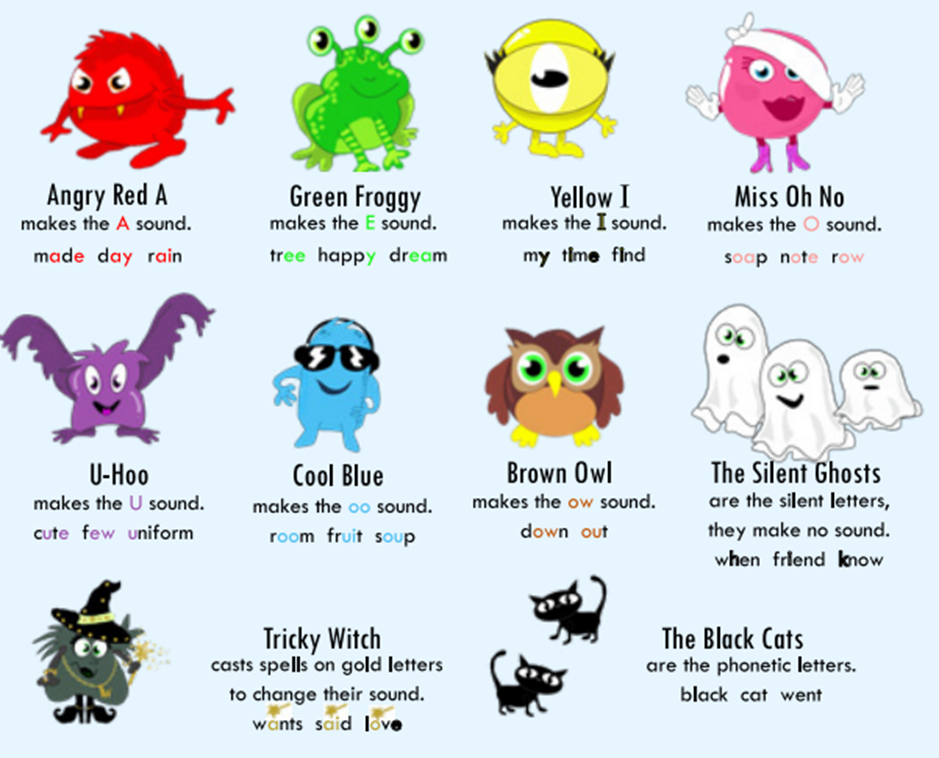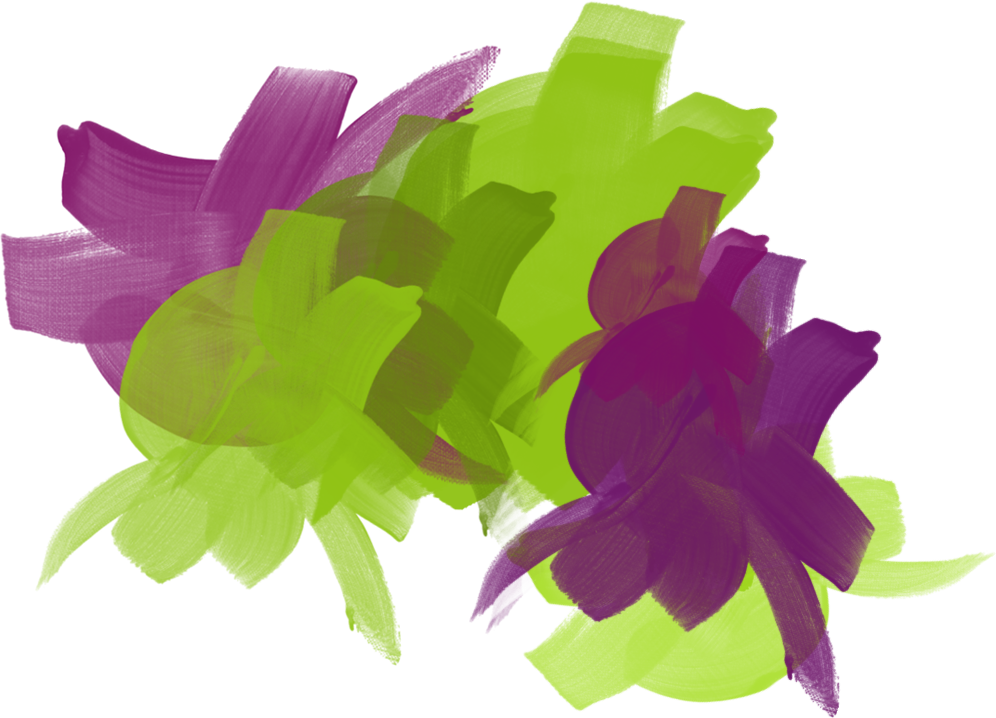Phonics
Intent
At Putnoe Primary, we recognise the fundamental role reading plays in pupil’s lives and we will strive to help them become fluent and confident readers. We recognise the impact reading ability and enjoyment has on a pupil’s future academic achievement, wellbeing, and success in future life. The reading and writing of Standard English, alongside proficient language development, is the key to unlocking the rest of the curriculum. Pupils that cannot read fluently are at risk of not fully accessing the wider curriculum. It is our aim that all pupils develop a love for reading, language, and books.
The start of this journey is rooted in Systematic Synthetic phonics. Phonics is the starting block for all areas of the Curriculum and is fundamental to the reading process. The phonics programme we follow at Putnoe Primary School is Monster Phonics.
Monster Phonics is a highly engaging, structured, synthetic phonics programme. It facilitates learning by using monsters to group graphemes for recall and act as an easy and fun memory cue for pupils. It also uses colour-coding to highlight the grapheme when teaching a new grapheme. Once taught and secure, the colour is removed.
Monster Phonics matches the Reception EYFS framework and KS1 Spelling Curriculum. It progresses from simple to more complex phonic knowledge and skills, building on prior knowledge. The main principles of systematic synthetic phonics teaching are followed, allowing pupils to become confident and successful readers, spellers and writers from a very early stage in their school life. Each monster has a backstory, and these are used in all areas of the phonics programme. Ten monsters and corresponding colours represent the areas of phonics that present the biggest obstacles to learning.
To increase the proportion of pupils achieving the ‘expected’ standard in phonics.
Implementation
- At Putnoe we follow the DFE approved Monster Phonics scheme, this is started in the Spring term in our 4+ setting and continues till pupils are confident with phonics.
- Phonics in 4+, R and 1 is delivered as ‘whole class’ teaching, with the support of skilled teaching assistant to work with targeted pupils in class.
- We follow a ‘keep up’ rather than a ‘catch up’ philosophy, where we use ‘in the moment’ assessment to address any misconceptions and gaps immediately. Pupils in 4+, R and 1 are placed in ‘Keep up’ sessions delivered by a teacher the same afternoon.
- We have rigorous assessment trackers to ensure early identification of any pupils who may need extra support and plug any gaps in learning quickly.
- We ‘flood fill’ both Reception and Year R with Monster Phonics trained staff to complete GR sessions. These follow a strategic structure that all staff follow using the Monster Phonics reading books.
- Intervention is regular in both reading and phonics for pupils in KS2. They have intervention sessions delivered by trained adults focusing on high order graphemes and CVC words.
- Parents are encouraged to engage with their child’s phonic learning by having access to the MP platform and unlimited access to E – Books at home. Parents are provided with weekly information posters and termly training delivered by Putnoe staff. As well as the opportunity to access Monster Phonics parent training.
- All ‘new starters’ will complete a Monster Phonics ‘Baseline assessment’ to ensure clear starting points. All ‘new starters’ will complete the ‘placement document’ to ensure they are accurately placed on a reading book.
- Pupils will only take a books home if they are 95% fluent after their 3rd read with an adult.
- A pre – book programme has been created for pupils who still need to develop their fluency.
Impact
The impact of our Phonics curriculum will be measured through:
- The subject lead ensures that the National Curriculum requirements are met
- Following guidance from the ‘Reading Framework’
- End of Year 1 phonics data to match or exceed national averages
- Year R and 1 to have clear target points across the year for pupils to be ‘on track’ to pass the Phonics Screening Check
- Learning walks of the teaching of phonics and early reading to show high quality teaching.
- Recording in GR logs
- Pupil outcomes are monitored in the following ways: book looks, discussions with staff, review of LTP.
- Sharing good practice among staff.
- The Phonics lead identifies clear next steps, which are determined by a cycle of monitoring, evaluating, and reviewing.
- Phonics Progress Pupil meetings held every 5 weeks with each teacher to identify pupils who need additional support.
- Phonics Tracker data
- Phonics screening check termly data
- Regular training with TA and teachers
All about Monster Phonics
At Putnoe Primary School, we use the DfE approved ‘Monster Phonics’ programme. When selecting an appropriate Phonics scheme to follow, we reviewed a number of different programmes and chose the correct vehicle for the delivery to our children, here at Putnoe. Our evaluation highlighted Monster Phonics as being best suited to meet the needs of our children. The ley reasons for this choice are:
- Monster Phonics is a highly engaging scheme and our pupils 'love it!'. For the pupils at Putnoe, the monster characters are the biggest hook. Each Monster representing a colour and a sound. The children enjoy learning about 'Monster Phonics Land' and learning about the different characters. It makes the learning fun and engaging for all pupils. They particularly love the 'catchy' songs that help introduce the different sounds.
- The colour coding system is excellent for introducing new sounds and is hugely effective for pupils at the start of their learning journey.
- Monster phonics matches the EYFS and KS1 spelling curriculum. It provides one package for spelling, phonics, intervention and provides high quality books that allow teachers to accurately match reading books to a child's phonic ability.
What is the Monster Phonics Approach?
Monster Phonics is a highly engaging, structured, synthetic phonics programme. It facilitates learning by using monsters to group graphemes for recall and act as an easy and fun memory cue for children. It also uses colour-coding to highlight the grapheme when teaching a new grapheme. Once taught and secure, the colour is removed.
Monster Phonics matches the Reception EYFS framework and KS1 Spelling Curriculum. It progresses from simple to more complex phonic knowledge and skills, building on prior knowledge. The main principles of systematic synthetic phonics teaching are followed, allowing children to become confident and successful readers, spellers and writers from a very early stage in their school life.
You can find out more about Monster Phonics by clicking here, clicking here.
Each monster has a backstory, and these are used in all areas of the phonics programme. Ten monsters and corresponding colours represent the areas of phonics that present the biggest obstacles to learning. Each of these are outlined below:
The Alternative Graphemes for Long Vowel Phonemes
- The long A phoneme is made by the red character called Angry Red A. The graphemes that make the long A phoneme are coloured red.
- The long E phoneme is made by the green character called Green Froggy. The graphemes that make the long E phoneme are coloured green.
- The long I phoneme is made by the yellow I character called Yellow I. The graphemes that make the long I sound are coloured yellow.
- The long O phoneme is made by the pink character called Miss Oh No. The graphemes that make the long O sound are coloured pink.
- The long U phoneme is made by the purple character called U-Hoo. The graphemes that make the long U sound are coloured purple.
- The long oo phoneme is made by the blue character called Cool Blue. The graphemes that make the long oo sound are coloured blue.
- The long ow phoneme is made by the brown character called Brown Owl. The graphemes that make the long ow sound is coloured brown.
- Silent letters are represented by the Silent Ghosts which make no sound. They are coloured white.
- The Tricky Letters are graphemes that have a different phoneme from what has been taught previously. They do not show regular grapheme-phoneme correspondence.

The staff link for phonics is Mrs Bilham. If you would like any information that is not published on our website, please do not hesitate to contact your child’s class teacher or Mrs Bilham using the following e-mail address: clare.bilham@putnoeprimary.co.uk.
Please use this link to find out how you can support at home. At the bottom of this page, are three progression documents: one for Reception, another for Year 1 and a final one for Year 2.

